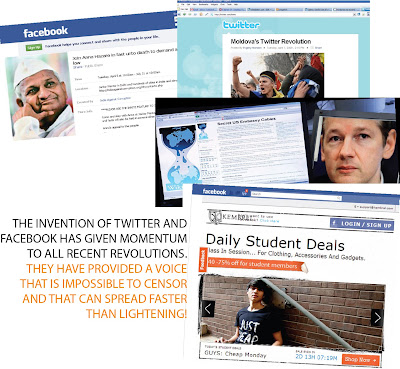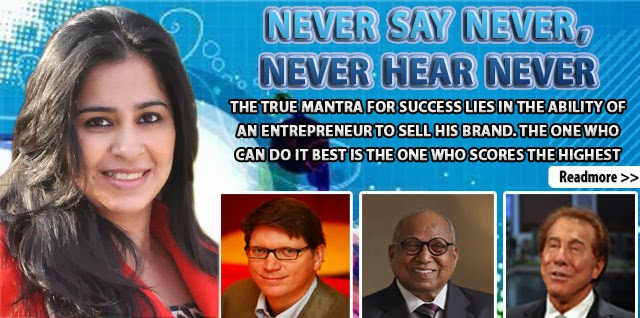MAINE KAROO TO CHARACTER DHEELA HAI!
What makes this song so entertaining? Is it Salman or is it the lyrics or both? Probably both. The words were as important as Bhai’s unique style in making it such a big hit. Mind it, the language you speak can change the fortunes of your brand, your company and your movie!
MUNNI AND SHEILA, TO MCDONALD’S & SONY
Language has the power to attract and this new language has taken everyone in its grip & its here to stay. From Bollywood to the business world, from babes to brands, everybody is using it. Hinglish is the language of today. It’s trendy, young and happening and it’s keeping the cash registers ringing for all who use it. Today’s most popular songs – from “Munni darling” to “Pappu can’t dance saala” to “My name is Shiela” and the current craze “...Character dheela hai” – have Hinglish lyrics. It makes the songs catchy and very entertaining and the audiences love them.
Not just Bollywood, smart businessmen the world over have realized that it’s this “street English” that works like magic to attract the consumers, so much so that even foreign brands are speaking it. Pepsi now says “Youngistaan ka wow!” Cadbury says it is not just a chocolate but “meetha” to be had after meals (a typical Indian custom). Domino’s for years has been asking “Hungry kya.” Lehar says “Control nahi hota,” and they all have successfully managed to connect to their customers! The verdict: The one who speaks the language the customer loves, rules.
HINGLISH – FOR SURVIVAL
“Kitne aadmi ko text karna hai?” Wondering which company’s tagline this is? Not Airtel, Aircell, Vodafone or even Idea. It’s the tagline of Rogers, Canada’s leading telecommunications company. Foreign brands too are using Hinglish to reach out to the Indian consumer in foreign lands. Bell Canada called on its consumers to “Put some bang in your Bhangra” as it celebrated Baisakhi with them in Canada. Across the border in America, McDonald’s sent small cards to various Indian households asking them to taste its ice-creams and shakes, with a tagline, “Taste ki baat hai.” And the Indian- American population loved it.
Wells Fargo used Hinglish too, on its hoardings in America to reach out. “Safalta aapki, solutions hamare” was the tagline plastered on various billboards.
Hinglish today is a global language and even the Brits have accepted it. Demos, an influential British think-tank, came out with a report stating language blends like Hinglish were the way forward, adding, “With non-native English speakers set to top two billion in as little as five years, Britain’s influence, relationships and access to markets across the globe are at risk unless we change our outmoded attitude to language.” It’s no more the Queen’s English; rather, to survive, one needs to master “The Queen’s Hinglish,” the new language of the new culture. This is the new law of survival. This is the way to reach out to your customers.
CHANGE YOUR PRODUCT, NOT JUST YOUR LANGUAGE
A famous Indian proverb says, “If you live in the river, you should make friends with the crocodile.” The one who adjusts best, wins. The one who understands not just the local language, but the local culture and way of life too, beats competitors. When Whirlpool launched its washing machines in India, it realized they were not suitable for washing saris. It immediately redesigned them to suit local preferences. KFC today has a vegetarian thali. An outlet that gained popularity because of its fried chicken, has removed chicken from some of its dishes to suit local tastes. Smuckers Foods of Canada has a ‘Golden Temple’ brand of atta, for the brand name – leaving the political incorrectness of it aside – plays a big role in motivating NRIs to reach out for it.
Intelligence is not measured by IQ scores, but by one’s ability to adapt. The most intelligent species are those that have found ways to adapt, and no one has adapted better than humans, who have learnt to adapt to almost any situation, any climate – so have some of the most successful brands. Nokia made dust resistant keypads for the Indian market. Sony built dust resistant TVs for India. HLL understood the rural consumer and introduced shampoos in sachets priced at Re.1, which became big money spinners for the company. Subway serves no beef in India.
The biggest of global brands with the best of products had to think local and even change some of their best strategies to succeed in foreign lands. The ‘Dell Dude’, a know-it-all, speak-fearlessly-to-strangers, kind of character was used by Dell on American TV – and he was a big hit. But this cool guy was not featured in Japanese ads for they would not appreciate a character like that.
Unilever launched coconut ice-creams with fruits in Bangkok to suit the Thai palette. Wall’s ensured that its ice-creams tasted different in Asia; no wonder in 2000, its share of the Asian market was 41% as compared to 15% of Nestle’s. Disneyland realized that if it had to make money in Hong Kong, it had to lower its prices, change its decor and settings to suit local tastes. Starbucks is making sure its outlets blend with the culture of the place and look less foreign. Just because it worked in one place is no guarantee that it will work everywhere, and brands should be ready to discard even their best ideas if they don’t match the local market’s choices.
Maxwell House Coffee was one of the first to realize that it pays to understand local culture. It was one of the first to pitch its coffee directly to the Jewish consumers. Nine years back, it noticed that sales of coffee fell drastically among Jews during ‘Passover’, a Jewish festival. It quickly hired an Orthodox rabbi who declared coffee was a berry (a fruit) and hence was totally acceptable to be had during the 8 days of Passover. It even came out with a booklet, ‘Passover Haggadah, Brought to you by Maxwell House’. This instantly made Maxwell an integral part of the Jewish community and its traditions. Today, anybody who wants to get instructions of how to celebrate Passover reaches out for Maxwell’s booklet, which can be picked up for free from the ‘Passover aisle’ or the ‘coffee aisle’. The very same coffee aisle which some years ago no Jew looked at during Passover, adapted and survived.
The ‘Dirt is good’ campaign of Unilever started in UK, but the company took extra efforts to ensure that the campaign was adapted to suit the local cultures of different countries; and it become a hit the world over. ‘Daag ache hai’ was just as loved by everybody in India.
Nike, Coca Cola and many other MNC’s entered India with their best global advertising campaigns. None worked and succeeded like the ‘Bleed Blue’ or the ‘Thanda Matlab Coca Cola’ campaigns, which instantly made the brands a part of the local culture.
Similarly, Dove’s ‘Real Beauty’ campaign succeeded in the West, but failed in China and Japan, where traditional views of feminine beauty still hold strong. Wizard of Oz, the wonderful children’s book has been translated into 40 different languages but adapted to suit local cultures. The Tin Woodman was replaced by a snake to suit the Indian culture; in the Russian version of the book, a man-eating Ogre was introduced.
Motorola launched a phone for the young in India and named it Moto-Yuva, and its key feature was a Hinglish T9. With SMS catching up, the company ensured its brand was in-sync with the language of the youth. Brands that adjusted, stayed; others vanished. Bollywood has adjusted too. More than 30 films released this year have Hinglish titles. ‘Always Kabhi Kabhi’, ‘Bhindi Bazaar Inc’ to ‘Short Term Shaadi’, all are riding on the popularity of Hinglish to make their films sound young, trendy and interesting. It’s the title (much like the tag line in advertising) that matters too – not just the stars.
It’s said the wise are like water, which moulds itself according to the pitcher. Shakespeare never hesitated to modify theEnglish language and coined almost 1600 new English words, borrowing freely from French, German, Latin etc to help him describe better and make his narratives more engrossing and effective. Even though a lot is being debated about whether Hinglish is good – for eventually it distorts both Hindi and English – but as marketers, we need to know the pulse of the audience; and he loves this language. So do not hesitate to change and adapt to make your marketing plans more effective... Even Shakespeare did it and no one questioned him!
Adapt to the local language, the culture, to sell your goods and ideas; and if anyone points a finger, well, sing in Hinglish, “Shakespeare kare to OK, maine karoo to saala character dheela hai!” Change your language, adapt your products and you will not only survive, but lead!


Comments
Post a Comment